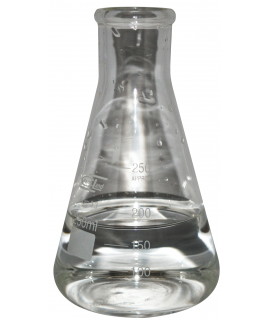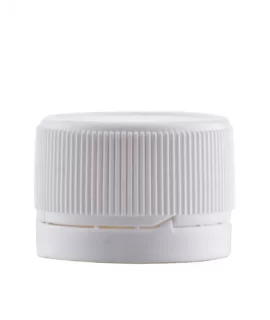Parameter | Property |
Na2EDTA 99% | N,N′-Ethane-1,2-diylbis[N-(carboxymethyl)glycine] Diaminoethane-tetraacetic acid disodium salt Edetic acid (conjugate base edetate) Ethylenedinitrilo-tetraacetic acid disodium salt Versene |
Formula | Na2C10H14N2O8 |
Structure |
|
IUPAC | 2,2′,2″,2‴-(Ethane-1,2-diyldinitrilo)tetraacetic acid sodium salt |
CAS | 6381-92-6 |
Bulk density | 292,244 g/mol |
Density | 0,860 g/cm3 (at 20 °C) |
Solubility | Up to 5% at 20°C |
Na2EDTA is a sodium salt of aminopolycarboxylic acid, a colorless, water-soluble solid. Its conjugate base is ethylenediaminetetraacetate. It is widely used for dissolving lime or lime deposits and for forming chelate compounds.
In the food industry, EDTA is added to some foods as a preservative or stabilizer to prevent catalytic oxidation, which causes the product to change color. In soft drinks containing ascorbic acid and sodium benzoate, EDTA reduces the formation of benzene (a carcinogen).
In agriculture and horticulture, EDTA can be used to dissolve various metal ions at neutral or lower pH levels. This makes micronutrients more easily absorbed by plants. When using EDTA for fertilization, significantly less fertilizer is needed to achieve the same effect. Metal ions bound to EDTA become unaffected by other substances in the environment, e.g. Calcium does not react with carbonate ions, so insoluble calcium carbonate is not formed, and iron does not react with phosphates, so insoluble iron phosphate is not formed. When preparing fertilizers or fertilizer mixtures, Na2EDTA is added to mineral fertilizers or micronutrients to form chelated micronutrients, which are much easier for plants to absorb.
In metalworking, EDTA is mainly used to remove metal ions from aqueous solutions. It is particularly useful when gentle cleaning of metal surfaces is required and to prevent surface damage (which occurs when cleaning deposits with strong mineral acids). Sodium EDTA binds metal ions in the form of salts and oxides (in the form of scale), dissolving them but not dissolving the metal itself, as the pH is slightly alkaline, i.e., it slows down the corrosion of metals.
In the cleaning industry, it reduces water hardness and facilitates the removal of deposits in water heaters (boilers). This chelate can be found in most descaling agents. In detergents, EDTA binds metal ions, softens water, and increases the effect of surface-active substances.
In medicine, a special EDTA salt known as sodium calcium edetate is used to bind metal ions during chelation therapy, for example in the treatment of mercury and lead poisoning. It is also used in a similar way to remove excess iron from the body. This therapy is used to treat complications of repeated blood transfusions and can also be used to treat thalassemia. Dentists and endodontists use EDTA solutions to remove inorganic debris and lubricate root canals. In addition, EDTA solutions containing a surfactant loosen calcification in root canals and allow the canals to be shaped. It is used as a preservative (usually enhancing the effect of other preservatives such as benzalkonium chloride or thiomersal) in eye preparations and eye drops. EDTA is widely used in blood analysis. It is an anticoagulant for blood samples CBC/FBE, where EDTA chelates calcium in the blood sample, stops the clotting process, and preserves the morphology of blood cells. EDTA is a liquid dispersant and has been found to be a highly effective agent in reducing bacterial growth when implanting intraocular lenses.
In cosmetics, EDTA salts are used as sequestering agents in shampoos, detergents, and other personal care products to improve their stability in air.
EDTA is widely used in laboratories to extract metal ions. In biochemistry and molecular biology, ion depletion is often used as a method for deactivating metal-dependent enzymes, such as for analyzing their reactivity or inhibiting damage to DNA, proteins, or polysaccharides. In analytical chemistry, EDTA is used for complexometric titration and water hardness analysis or as a layering agent to remove metal ions that would interfere with the analysis. It is used in the cement industry to determine the content of free calcium oxide and magnesium in cement and clinker. It is used for the separation of lanthanide metals (lanthanides) in ion exchange chromatography.
In the textile industry, metal ions are not allowed to alter (change) the color of dyed products.
In the paper industry, EDTA inhibits the ability of metal ions, especially Mn2+, to catalyze the disproportionation of hydrogen peroxide, which is used for chlorine-free bleaching.
Important: Add the product to your shopping cart, fill in the recipient's details and confirm your order. Thank you!
To save your valuable time, we will deliver the ordered goods to the specified address at a time convenient for you !
* Product photos may not match the actual appearance, color, packaging, or shape of the products. The information in the product description is of a general nature and may therefore differ from the information on the product packaging. The information provided about product quantities and prices may in some cases differ from the actual product prices and quantities.
Signal word:Caution |
Danger pictograms:
|
Hazard statements: H302 Harmful if swallowed H315 Causes skin irritation H319 Causes serious eye irritation H335 May cause respiratory irritation. |
Precautionary statements: P261 Avoid breathing vapors and aerosols. P264 Wash thoroughly after use. P270 Do not eat, drink, or smoke when using this product. P271 Use only outdoors or in a well-ventilated area. P280 Wear protective gloves/eye protection. P301+P330+P331 IF SWALLOWED: rinse mouth. Do NOT induce vomiting. P332+P313 If skin irritation occurs: seek medical advice. P337+P313 If eye irritation persists: seek medical advice. P362 Take off contaminated clothing. P403+P233 Keep in a well-ventilated place. Keep container tightly closed. P405 Keep locked up. P501 Dispose of contents/container in accordance with local regulations. |
Related products
(8 other products in the same category)













